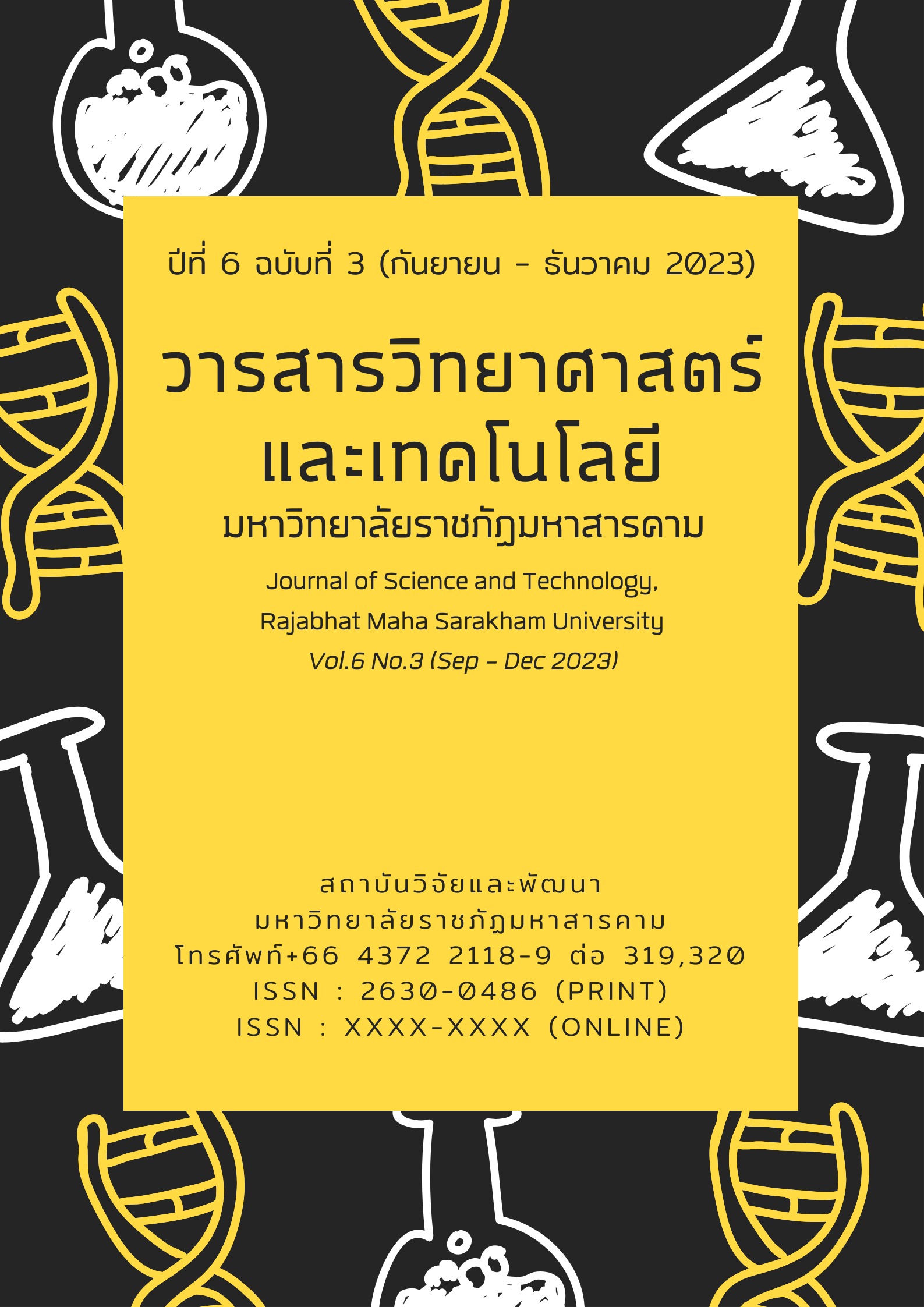Determination and health risk assessment of pesticide residues through fresh vegetables and fruits consumption in northeast of Thailand
Keywords:
Pesticide residues, Health risk assessment, Fresh vegetables and fruitsAbstract
The purposes of this research were to determination of pesticide residues through the consumption of fresh vegetables and fruit and health risk assessment of population in the northeast of Thailand. There were 100 samples of fresh vegetables and fruits were analyzed for the 132 pesticide residues by GC-MS/MS and LC-MS/MS techniques. For the results, it was found that 28 samples (28.0%) were detected with pesticide residues. The highest detected pesticide residues were Kale (21.4%), Oranges (17.9%) and Fresh chilies (14.3%), which came from Chaiyaphum, Nongkhai and Udonthani (10.3%). There samples which had been contaminated with Profenofos, Carbendazim and Carbamate. The samples of detected pesticide residue were exceeded of the MRLs and Default limit of Ministry of Public Health Notification (Pesticide Residues in Food). For the results, the health risk assessment of pesticide residues through fresh vegetables and fruits consumption of ADI shown the highest HQ was Triazophos in oranges with 6.70×10-1 and 7.54×10-1 while the highest HI was Organophosphates with 8.82×10-1 and 9.91×10-1 that both male and female respectively. Considering of the health risk assessment found that the consumption of pesticide residues through fresh vegetables and fruits were not a risk form consumption (HQ and HI ≤1). In order to protect consumers and reduce the risk from pesticide residues in fresh vegetables and fruits, continuous monitoring system should be done.
References
Anusasanee, P., Butryee, C., Tanaviyutpakde, P., & Karnpanit, W. (2021). Risk Assessment of carbamate pesticides through vegetable and fruit consumption in Thai Population. Thai Journal of Toxicology. 36(1): 91-112
Bureau of Quality and Safety of Food. (2019). Food safety report 2019. Department of Medical Sciences Ministry of Public Health. http://bqsf.dmsc.moph.go.th/bqsfWeb/wp-content/uploads/2021/09/Food-safety-report-63.pdf.
Cholumpai, V., Nasuk, C., & Phutthasukha, K. (2021). Health Risk Assessment of Fresh Chillies with Residual Insecticides in Health Region 6. Journal of Health Science. 30(5):790-801.
Department of agriculture. (2021) Mancharya offers a high-grade sampling of pesticide residues, vegetables, fruits and durian, GAP plant. https://www.doa.go.th/th.
FRAC: Fungicide Resistance Action Committee. (2023). The IRAC Mode of Action (MoA). https://www.frac.info/home.
Greennews agency. (2023). Special report the Agricultural Chemistry crisis - Food Safety in 2023. https://greennews.agency/?p=32457
Hinhumpatch, P. & Wattanachaiyingcharoen, W. (2021). Evaluation of Carbamate Pesticide Residues in Melons.Thai Science and Technology Journal (TSTJ).29(1). 62-72.
IRAC: Insecticide Resistance Action Committee. (2023). The IRAC Mode of Action (MoA). https://irac-online.org/mode-of-action/
IUPAC: International Union of Pure and Applied Chemistry. (2023). THE PPDB A to Z List of Pesticide Active Ingredients. http://sitem.herts.ac.uk/aeru/iupac/atoz.htm
Li H., Chang Q., Bai R., Lv X., Cao T., Shen S., Liang S. & Pang G. (2011). Simultaneous determination and risk assessment of highly toxic pesticides in the market-sold vegetables and fruits in China: A 4-year investigational study. Ecotoxicology and Environmental Safety. 221, 1-13.
Ministry of Public Health Notification No.387. B.E. 2560 (2017, 18 September) Re: Food Containing Pesticide Residues (Pesticide Residues in Food). Government Gazette. No. 134. Section 228 D. page 8-32.
Ministry of Public Health Notification No.389 B.E. 2561 (2018, 22 October) Re: Food Containing Pesticide Residues (Pesticide Residues in Food). Government Gazette. No. 135. Section 74 A. page 1–23.
Ministry of Public Health Notification No.419. B.E. 2563 (2020, 2 November) Re: Food Containing Pesticide Residues (Pesticide Residues in Food). Government Gazette. No. 137. Section 257 D. page 27-28.
National Bureau of Agricultural Commodity and Food Standards (2016). Food consumption data of Thailand (https://www.acfs.go.th/files/files/attach-files/867_20190606145951_625162.pdf) In the public domain.
Plant protection research and development office. (2019). Recommendation for effective and safe pest prevention based on 2564 research. Department of agriculture. Ministry of Agriculture and Cooperatives. https://www.doa.go.th/ac/nan/wp-content/uploads.
Prasopsuk, J., Laohasiriwong, S., Promkhambut, A., & Boonthai, I. C. (2019). Risk assessment of pesticide residues in soil to health of Chinese kale growers in Khon Kaen province, Northeast Thailand. Thai Agricultural Research Journal. 37(3):272-283.
Seo H., Cho H., Hong K., Kim S., Cho J., Park H., Hwang S. & Kim S. (2013). Monitoring and Risk Assessment of Pesticide Residues in Commercially Dried Vegetables. Preventive Nutrition and Food Science.,18(2), 145-149.
Sivaperumal P, Rupal T., Dhirendra K. & Tejal G Riddhi L. (2022). Human health risk assessment of pesticide residues in vegetable and fruit samples in Gujarat State, India. Heliyon. 8 (e10876). 1-10.
Thamwiriyasati, N., Malaiket, W., Wisutti, R., & Kanokleardwong, K. (2019). Behavior for vegetable consumer to the risk of pesticide toxicity effects on health impacts in adult people. Journal of Health Science. 28(5),723-781.



